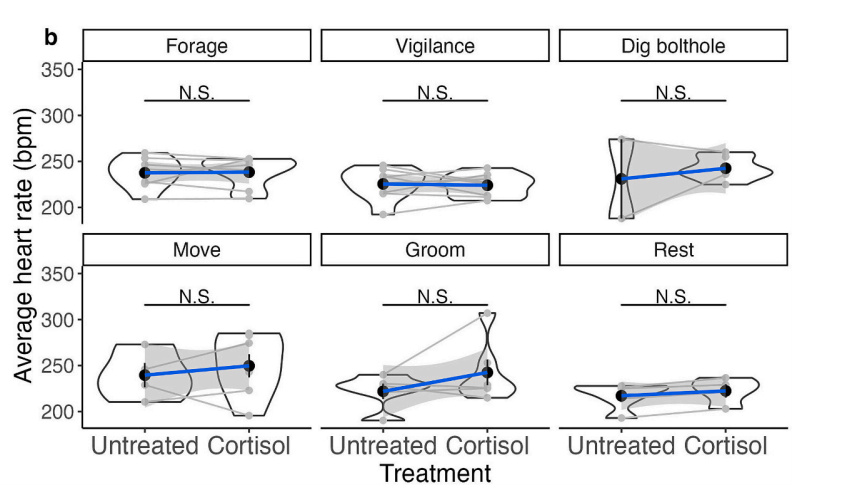News

Glucocorticoids Not the Direct Driver of Arousal Related Changes of Heart Rate in Meerkats
Emotional arousal variation in vocalizations has been extensively studied in many animal species as well as humans. Various animals do produce distinct call types related to different behavioural context and emotional states. In a recent study the effects of orally administered glucocorticoids on emotional arousal and vocal communication in wild meerkats were investigated.
Meerkats ingested glucocorticoids
Meerkats were fed scorpions injected with glucocorticoids to examine their impact on heart rate, vigilance behaviour, call rate, and vocal structure during natural context. Exogenous administration of glucocorticoids has, to date, only been shown to affect birds and amphibians, but not mammals.
Heart rate measured every 15 seconds
Scientists from University of Zurich, Switzerland, Kalahari Meerkat Project, South Africa, University of Copenhagen, Denmark and University of Pretoria, South Africa, implanted 14 meerkats with Star-Oddi’s DST micro-HRT physio-loggers. They were programmed to measure every 15 seconds for 6 hours per day. Data used ranged from the day before treatment to the day of cortisol treatment. Cortisol was administered through dead scorpions injected with an amount of cortisol that equals 20 mg/kg. Scorpions were fed to the meerkats within 30 minutes of starting foraging in the morning.
Little or no effect on heart rate
The glucocorticoid treatment had no detectable effect on vigilance, call rate, or call structure—either within individuals (before vs. during treatment) or between individuals under the same conditions (cortisol vs. control). Even though the cortisol administration increased the plasma levels, this did not have a clear effect on heart rate, see part B from fig. 2 that shows the average heart rate. It is a possibility that glucocorticoid levels change too slowly and the lack of external stressor or alarm events also have an impact.

Further results can be read in the article published in Hormones and Behaviour.